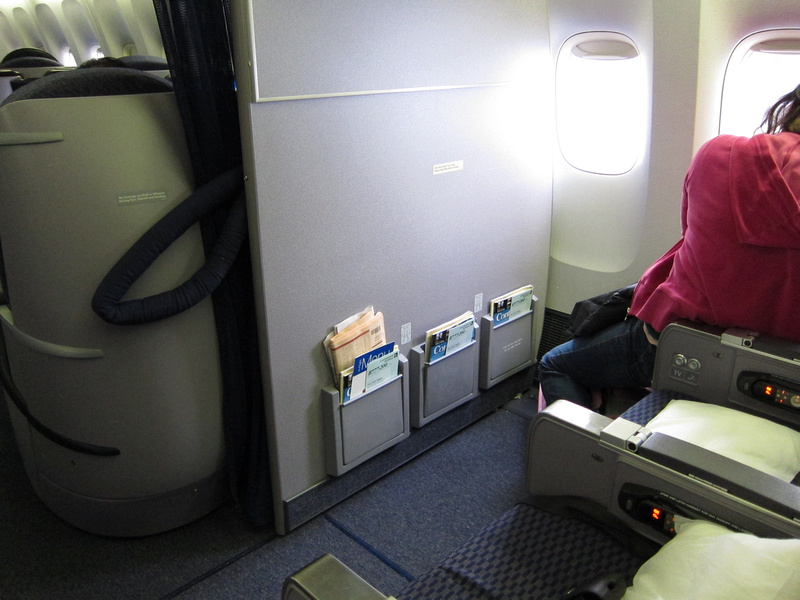Apart from separating the business and economy classes, such bulkheads may be encountered allover the plane, separating the seats from the galley as well as the lavatory areas. It thus follows that bulkhead seats are the seats located directly behind these bulkhead screens.
Thus, there is will be no one to lie back in front of you. The mere fact that there is no seat in front of you will make this happen. This usually makes it easier to enter and exit your seat during flight too. Some of these seats will therefore offer you extra legroom. Naturally, if the partition screen is located at a considerable distance from the first row of seats, the passengers sitting in the bulkhead seats will reap the benefits of the extra space provided by these seats.
If you are one of those passengers who like to relax by putting your feet up, than you’re one of the lucky ones as you’ll certainly be able to make yourself at home. In other cases, the partition wall or curtain does not touch the floor which leads to some extra space. This bonus spaciousness will certainly allow you to stretch or legs and unwind. Or, you may even use it to place you hand luggage.
If you wish to find out which seats provide extra legroom, you just have to mouse over each particular seat on the SeatMaestro® seat-maps. Furthermore, you may not only enjoy extra legroom, which is by all means, great, but you will be amongst the first to be served food or drinks.
However, the majority of the bulkhead seats are standard which practically means that the bulkhead wall will be about a foot in front of your seat. Thus, the space which you may use to stretch your legs will be limited. You may thus have a limited space to stretch your legs. What is more, the mere fact that there is no seat in front of you means that you will not have any under-seat stowage for you hand luggage. You may have to put your carry-on in front of you during the flight.
On the other hand, the flight attendants will not permit you to keep any bags in front of you during takeoff and landing. Hand baggage must be stored in lockers during takeoff and landing. This policy is valid for all types of bulkhead seats, irrespective of the airline or class in which you are flying. Another bit of trouble in so far as bulkhead seats are concerned, is related to the fact that tray tables for such seats are more than often stored in the armrest. In fact this is the only reasonable place to locate them as there is no seat in front of you to hold them.
It follows that your armrest will be somewhat impossible to move. Besides, your seat’s width will be considerably reduced. You may get more leg or knee room but might not be able to stretch your legs depending on cutouts and the seat may be marginally narrower if the tray table is inside the armrest. These seats are often given to families with young children and this can be a nuisance. So, you may also take this into account when choosing your seat.
All in all, probably the best thing about the bulkhead is that nobody is leaning back into your space. After all, it’s a matter of personal choice. There are of course people who love them and there are those who loathe them. Some say that there is nothing worse than not being able to extend your knees properly for an entire flight. Others simply enjoy all the benefits of nobody reclining back into you. As we said, it’s nothing more but a matter of opinion.

 En
En Es
Es Fr
Fr











